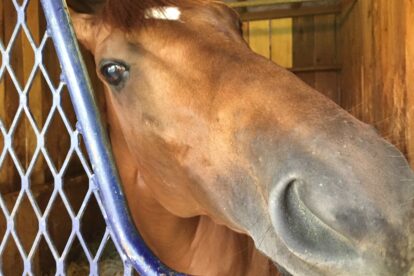There is a lot of information floating around when you are handicapping, but perhaps the single most important piece of information for me is a horse’s Beyer speed figure. We often talk about this number on The Magic Mike Show, which has spawned quite a few questions from people who don’t rely on it to handicap as heavily as I do. It may not be the best indicator or overall explanation of a race, but more money is bet based off of that number than any other single figure or angle.
When first learning to handicap, most of us were taught about speed figures such as Beyer, and while it may not have been explained how to calculate or fully understand them, speed figures are used as a point of reference. They’re bolded in almost every form or program across US and Canada, drawing the public’s collective eye to them, meaning that this one single number has the ability to determine who will be the favorite and who will be a longshot. Therefore, your ability as a bettor to understand if a horse will maintain, improve, or regress off of the most recent figure(s) will go a long way toward spoting horses that are being overplayed and horses that are being overlooked.
Before I get into what I look for in each of the above scenarios, let’s go on a little tangent. I played poker professionally for 6 years. Mainly cash games of all sizes, but some tournaments as well. One of the main reasons I was able to consistently win month after month, year after year was because I was excellent at picking off people who were bluffing. To me, each hand told a story. You slowly gather information as the hand plays out based off the other players actions. Did they raise pre-flop? Did they put in big bets at every chance? Did they act quickly when it was there turn or were they methodical? If at the end of the hand they make a big bet, does the story they are telling make sense? Is each action logical in sequence or are they outliers that are hard to explain? The less the story being told makes sense, the more likely your opponent is bluffing.
Each race on the page is a story. Each Beyer figure encapsulates that race. It is our job to understand which Beyer figures are accurate to the horse’s ability, which are over achievements, and which races you throw out.
Maintaining the Current Beyer
This is both the most common and the least valuable category. Anytime I have a horse in this group, they will always fall in the “known” category (see Handicapping 301: The Knowns vs. The Unknown) since we will have multiple races to point to that are inside of a reasonable range over the surface and at the distance. Often, you will find the race favorite in this category, since it’s the most noticeable pattern. If a certain horse consistently runs 75-80 Beyers, and you believe that it will take a figure within that range to win, then it is very easy to land on that horse.
With horses in this grouping, the more that stays the same, the better. I do not want horses to change jockeys or be first or second off of a long layoff, and I do not want them to be making large changes in class level or switching from New York to California. Those are reasons for large improvement or regression.
With my style, I rarely find a winner in this group that is sent off at over 5/1, which does not offer an overwhelming amount of value. That being said, they are also the most consistent because there is a proven track record of performances that will win the race.
Handling Large Improvement / Regression
If a horse jumps its past race figure(s) by 20 Beyer points and you cannot logically explain why, then it’s a bluff. There is a variety of reasons why there could be a large jump. Here are some that I look for, in no particular order:
- Distance – did the horse cut back from over a mile to a sprint, or perhaps the horse stretched out from one to two turns?
- Trainer Change – first time off of a claim gets a bonus
- Equipment Change – did the horse add/remove blinkers?
- Surface Switch – this is most commonly seen when going from dirt to turf (added bonus if the horse has turf bloodlines)
While these are reasons why you may see (or could project) improvement, they are also reasons for potential regression. The easiest way to find winning longshots is having the ability to explain why a horse ran poorly in its most recent effort(s).
If we agree that the single most influential number on a horse’s odds is the Beyer figure, then it is logical that multiple poor efforts strung together will drastically raise a horse’s odds in the next race. Therefore, if can you tell a story why a horse will run back to an effort that is good enough to win, then you can get paid big.
Let’s go back to the example in the last section, the one where a horse needs a 75-80 Beyer to win a race. Say another entered horse (we’ll call him Sam) has run in the 60s for the past few races, but Sam also has Beyers in that 75-80 range in his back class. Oftentimes, Same is a throw-out, but what if:
- This race will be 9 furlongs on turf, but Sam’s past few starts were sprints?
- Sam recently moved to a new barn, but his first race for the new trainer was rained off the turf?
- Sam wore blinkers for his past few starts, but he is not wearing them this time?
All of a sudden, you have a story that might explain Sam’s string of subpar Beyers. When you can find these strings of excuses that take you back to winning efforts, then you have just found a live longshot.
This same method can also be employed to play against horses. Some people refer to it as a bounce – a horse runs a career-best speed figure that it cannot repeat. While that does happen, I do not rely too heavily on the bounce theory (since each instance is unique), but if nothing changed (equipment/surface/trainer/etc.), then do not take the improvement at face value. The most common favorite that I see burning money is a mid-level claiming horse that makes a huge Beyer jump in an open-length win and comes back at the SAME level. Imagine that you own/train just such a horse. If your horse just won easily at the $40,000 level while showing new talent, then why would you run your horse back at $40,000 again? The answer, more often than not, is because that win was an outlier and the connections know it.
Understanding the public’s perception of a horse and its Beyer speed figures will allow you to recognize horses that are being overlooked or overbet. Every horse, every race, tells a story. It is our job to know when they are telling the truth.



